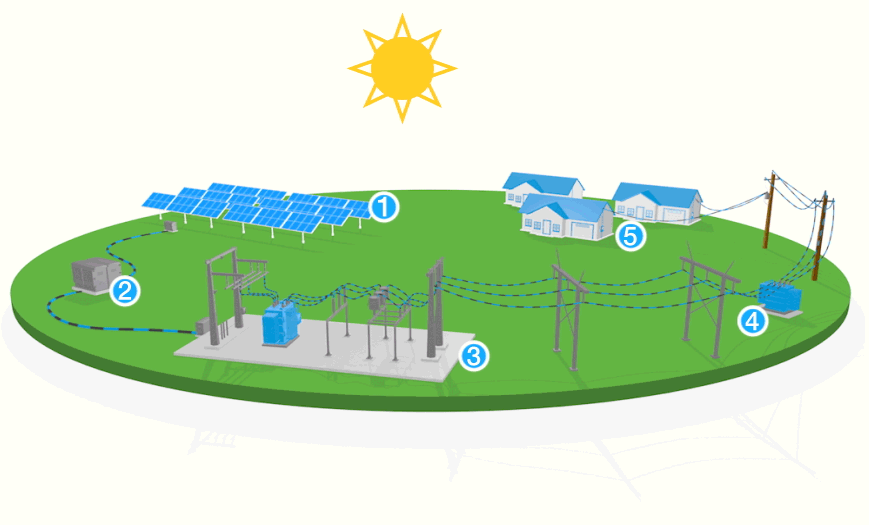Why do some wind turbines spin, while others next to them do not?
This is part of the normal operation of a wind farm. Continuous variations in wind direction, speed and intensity cause some turbines to spin while others nearby may be idle.
How reliable is wind energy?
Sophisticated monitoring and wind resource analysis allow wind developers to estimate with a high degree of certainty "when" and "how much" wind energy is available, so as to be reliably integrated into the electric grid. When the wind blows, wind farms are a reliable source of energy and also can displace fossil-fueled generation, such as oil and gas.
What happens when the wind doesn’t blow?
When the wind is calm, the turbine may be at rest. However, at the heights of utility-scale wind turbines — usually more than 200 feet above ground — on a site selected specifically for its good wind resources, it is not very often that they would be totally still.
Are there wind seasons?
Generally, yes, but they vary by region. In California, the peak wind season is summer; in the Midwest, it's fall and winter; in Texas, spring is peak. Each wind plant has specific daily and seasonal variations. Each wind site also has specific wind patterns, which are determined through wind studies conducted during early development of a project.
Do wind turbines operate in extreme temperatures/weather conditions?
Turbines sited in areas that experience extreme cold or heat are equipped with special Arctic or tropical equipment packages. In sustained winds of 56 mph or gusts of about 100 mph, turbines shut down automatically.
How often do turbines require maintenance?
It depends on various factors, but wind turbines generally require preventative maintenance checkups one to two times per year. We also have a state-of-the-art diagnostic center located at our corporate headquarters that monitors turbine operations 24/7 and can identify and address issues before they become operational problems. When an issue does occur, we work with the manufacturer to investigate the cause and replace the impacted equipment.
What does the computer system inside a wind turbine do?
The sophisticated computer system inside a turbine performs thorough self-diagnostic tests and troubleshoots errors before the startup command is given. If the computer detects any problems it cannot auto-correct, the turbine automatically shuts down. In addition, a system control and data acquisition (SCADA) control system allows a remote operator (using a data link from anywhere in the country) to set new operating parameters, stop and start and perform system checks, and ensure turbines are operating at peak performance.
Is wind energy just the latest energy fad?
Not at all. Today, new renewable energy sources are cheaper than the operating costs of older, inefficient coal and fossil generation units.1 According to the U.S. Department of Energy, the cost of deploying wind energy has decreased more than 90% since the early 1980's and by nearly 70% in the past decade.2
Sources:
Is a power purchase agreement required before construction begins?
Our projects generally secure long-term commitments for a wind farm's output from one or more buyers prior to construction.
What effect do wind turbines have on the transmission grid?
The energy from wind turbines can be reliably integrated into the transmission grid, so as to have no negative impact on the grid and provide customers with clean, renewable energy as a source of their electricity.
Safety
Are wind turbines safe?
Wind turbines are a safe and effective means of generating electricity. The first wind turbines came online in the U.S. in the 1980’s. People have been safely living and working around wind turbines for generations. In addition, wind turbines have several built-in safety features, and we also have a state-of-the-art diagnostic center located at our corporate headquarters that monitors turbine operations 24/7 and can identify and address issues before they become operational problems.
What effect can lightning have on turbine operations?
Modern turbines are equipped with an extensive lightning protection system that grounds (makes harmless) the equipment without affecting turbine operations.
Are wind turbines noisy?
When ground-level winds are high, the sound of the wind masks most of the turbine sound. The sound from the rotating blades may be audible depending on many variables, such as your distance from the turbine, weather conditions and time of day.
Does wind energy rely on government subsidies?
Yes, like all forms of energy production in the U.S. — whether fossil fuel or renewable — energy producers receive some level of support from federal and state governments to encourage investment. To learn more, view our Wind Energy - Government Subsidies Fact Sheet.

